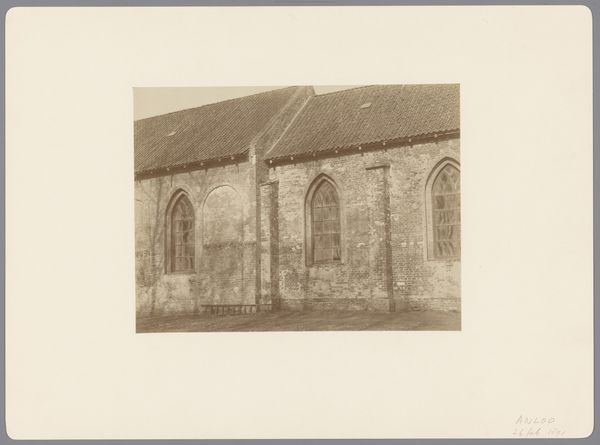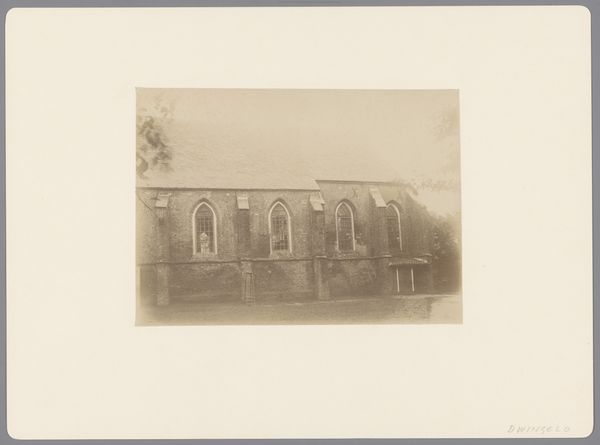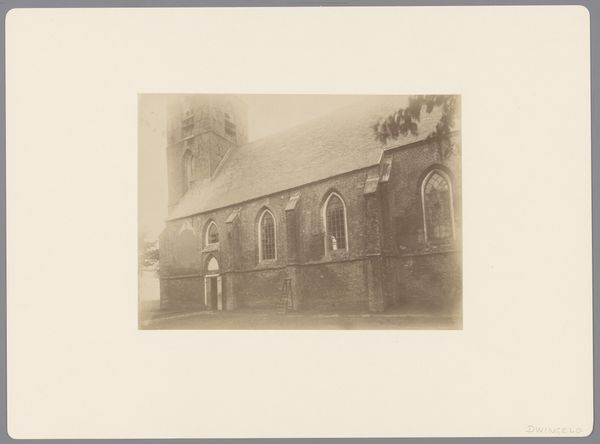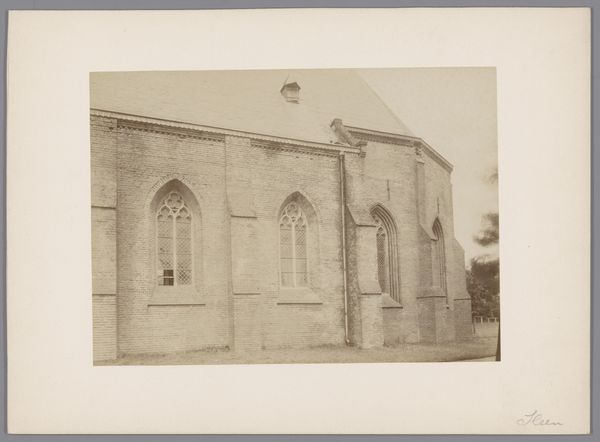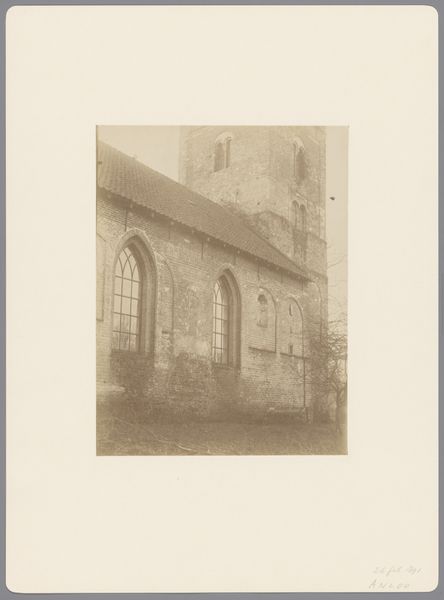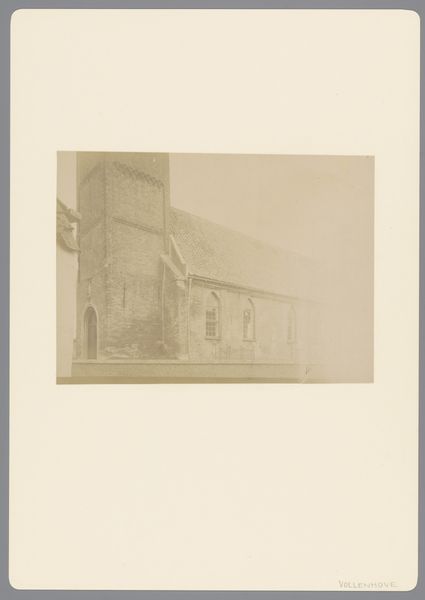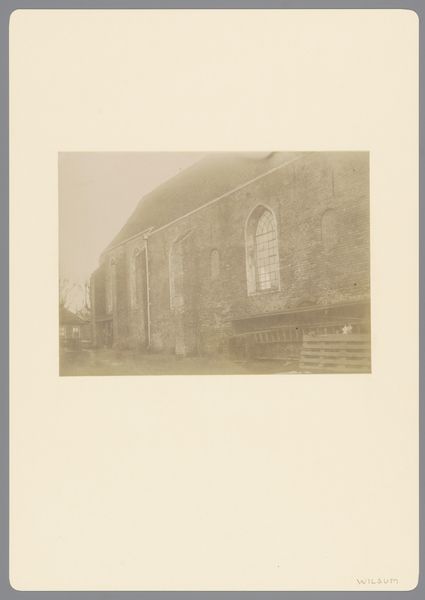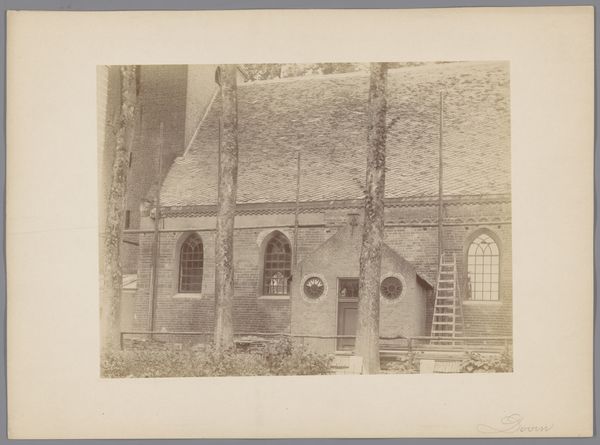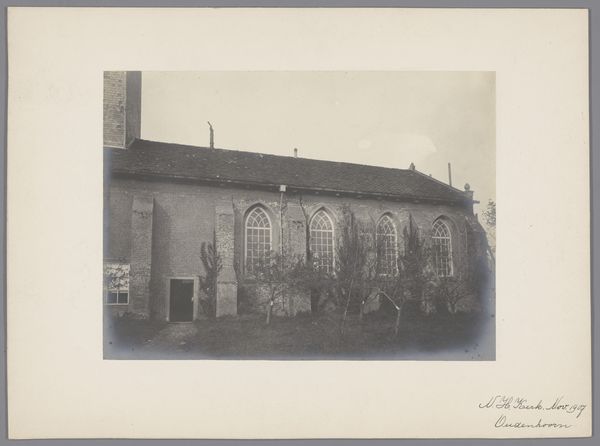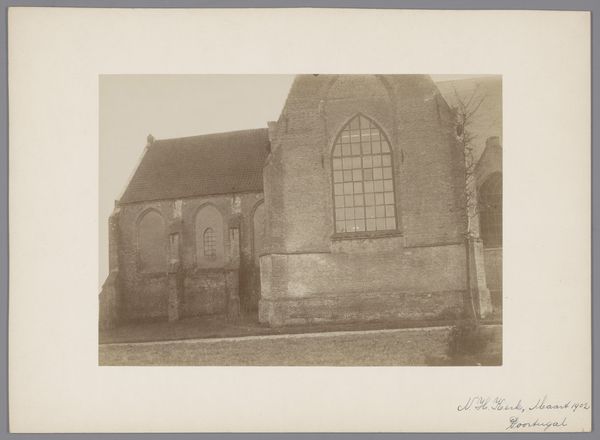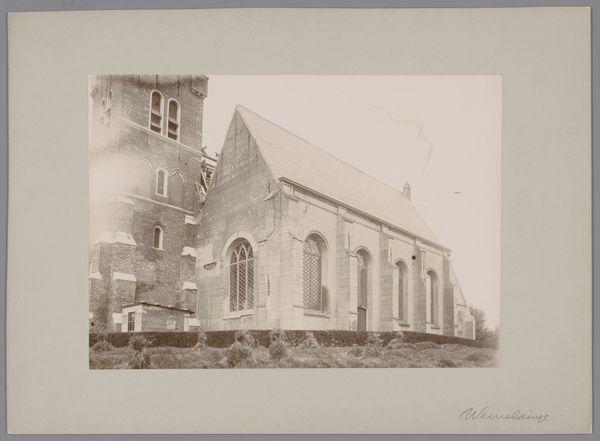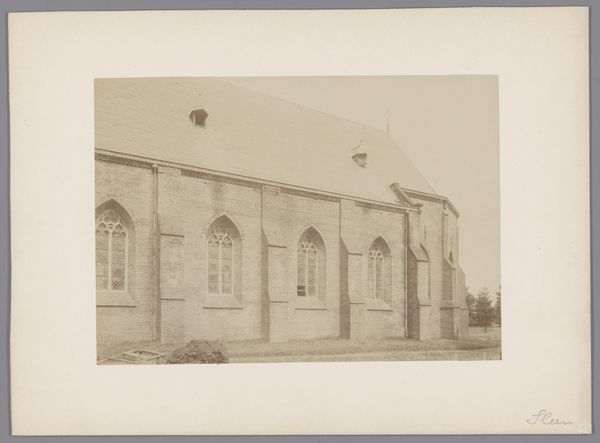
Dimensions: height 171 mm, width 227 mm
Copyright: Rijks Museum: Open Domain
Editor: Here we have a photograph titled "Noordzijde van de Magnuskerk te Anloo," taken in 1891. The stark, sepia tones really bring out the rough texture of the brick. What stands out to you most about this image? Curator: I'm immediately drawn to the materiality. Look at the construction, the sheer labor involved in building this church wall. Brick by brick, think of the process, from digging the clay to firing the bricks and laying them so precisely. Notice how the anonymous photographer documented that material and that process so clearly, emphasizing its role. Editor: So you’re saying that the artistic merit isn’t just in the architectural design, but also in the physical labor? Curator: Precisely! And the societal implications. Who built it? Were they paid fairly? What was the church’s influence in the local economy? The photo serves as documentation but also prompts questions of class and production. We should consider this as important context of the photograph. Editor: I hadn’t thought about it that way before. Does the architectural style impact that interpretation? The Gothic windows, for example. Curator: Absolutely. The pointed arches required skilled labor, a specialized craft. The form dictated the material requirements. Consider also the availability of glass at the time; a scarce resource impacting lighting in interior spaces. Each material choice is related to economic reality. Editor: It’s fascinating to consider art in relation to all those aspects. I had mostly been focused on aesthetic considerations. Curator: Indeed. By focusing on the materiality and the means of production, we uncover new ways to understand both the art and the society that created it. This piece illustrates how social context informs artistic practice and, as a viewer, challenges me to understand art through labor, skill and means of production. Editor: I will definitely think about that with every piece of art going forward! Thanks!
Comments
No comments
Be the first to comment and join the conversation on the ultimate creative platform.
